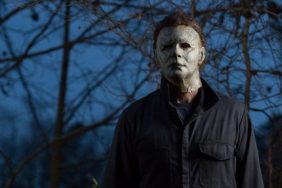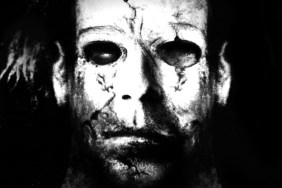Cinemascopic suburban nightmares

I’ll admit, I never gave Halloween its proper respect until 1995, when the Criterion Collection released a special restored edition of John Carpenter’s seminal slasher on the underappreciated Laserdisc format. Sure, I had seen Michael Meyers terrorize a virginal Laurie Strode many times over on video and TV, but never in it’s full widescreen aspect ratio, and boy did it make the difference when i quickly snatched up the expensive disc set in hopes of finally seeing H’WEEN the way it was intended.
Yeah..laserdiscs, remember those relics? Sure, it was a pain in the balls to get up and flip the huge laserdisc at the hour mark. Oooh P.J., you got some nice boo-PLEASE FLIP OVER DISC. Damnit! And yes, the Criterion Collection, usually known to preserve more, um, “classical” cinematic achievements like 8 1/2, The Seventh Seal, and my grandmother’s favorite, Salo: 120 Days of Sodom, would set you back a good 100 smackeroos to purchase one of their box sets. But to finally see Carpenter’s vision in its true, cinemascope glory and be given the facelift it finally deserved, it sliced opened this young horror fiend’s eyes like Un Chien Andalou (look it up kids) and made me realize how ground-breaking this unassuming slasher really was.
John Carpenter’s Halloween was one of the first films that practically forced me to appreciate the 2:35:1 scope and how the director staged his soon-to-be-iconic madman in all corners of the frame, looming about in the seemingly innocuous town of Haddonfield, ready to strike at any moment. This created a tension I never experienced while watching it, mainly because the pan & scan versions cropped the killer out in favor of the young, nubile teens. Unlike some of the other notable horror titles of the time that presented gritty subject matter with verite-like aesthetics over theatrics (The Last House on the Left, The Texas Chainsaw Massacre, Deliverance, Night of the Living Dead, etc.), Halloween strove to scare you in high style. If you look at the film now, even as culturally dated as it is (and will surely be once Zombie’s version is unleashed), the film is gorgeously presented, classically lit, staged and framed, which only adds to the unassuming frights to come….and we haven’t even touched on the sparse brilliance of his minimalist score.
Carpenter’s goals were clearly to make a great looking film, then pounce on us, unassumingly, very much like Myers, from around the corner, even in the frame. In previous versions cropped with pan & scan, you could never fully appreciate shots like when Michael slowly rises in the background as Laurie makes her desperate phone call. Not anymore (thanks DVD). It’s the use of the widescreen frame here that shows you that no space on screen is safe from The Shape, which is why it stands as the most effectively crafted horror films of the post-modern era…it’s full-on “widescreen willies.”
But even more unconventionally effective is that a bulk of the film’s timeline occurs in broad daylight, where (to me) the lion’s share of the chills reside. Sure, the Panaglide one-take is clever and haunting (and a hint more effective than the more shaky POV in Black Christmas), and there’s multiple shots where Carpenter utilized the negative space to make Myer’s “appear” in the background, but none of this would be effective if we didn’t already know that the boogeyman could get us right now. Not “wait till the moon rises” or any of that bullshit; this killer will drive down your street (it drives?!), follow you home, catch you unawares at school, and kill you. He’s anywhere. He’s everywhere. He’s right behind you, in that bush, behind that clean laundry. This was Carpenter’s master stroke, taking the solstice of the daylight and pissing all over it. If we didnât have those moments in the slower (but by no means less tense) second act, Myers would have no substance; he’d just be another schlub in his overalls and sporting a lame Cap’n Kirk mask, strolling around at night.
By shattering our safety zone, Carpenter created a fear of suburbia rarely seen at the time leaving the audience guessing where and when this psycho would pop out from the widescreen frame next…and contrary to the classic tagline, Halloween isnât just about the “night” he came home…heâs pretty scary during the day too!
Halloween is a horror film that will stand the test of time not because of the iconic character it created in Michael Myers. Halloween taps into so many universal fears in all of us: fear of the unknown, fear of unstoppable, pure evil, fear of “immoral” sex, drugs, young people, counter-culture, Blue Oyster Cult, crazy old British dudes and William Shatner masks. But most importantly, to me, is how Halloween can create tension and dread just by looking down your surburban block on the way home from school.
Cause you know…heâs right over there. Watching you.
Joe Lynch is the director of Fox’s upcoming Wrong Turn 2: Dead End.
Source: Joe Lynch










